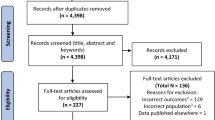Abstract
In a hospital-based case-control study 29 patients with idiopathic Parkinson’s disease (PD) and visual hallucinations (VH) were compared with 58 PD patients matched for age and disease duration, but without VH. VH patients had more frequently sleep disturbances and dementia, higher PD-related disability (Schwab-England scale), and took selegiline more frequently as an anti-Parkinsonian drug. The patient groups did not differ in age at PD onset, Webster score, treatment duration, dosage of any anti-Parkinsonian drug, frequency of levodopa-associated movement disorders, or measures on brain CT. After a median follow-up period of 27 months more VH patients had developed wearing-off and freezing phenomena, while their scores in the Mini Mental State Examination were lower. Nursing home placement during the follow-up period was associated with higher PD-related disability in VH patients.
Similar content being viewed by others
Author information
Authors and Affiliations
Additional information
Received: 15 October 1996 Received in revised form: 24 February 1997 Accepted: 27 February 1997
Rights and permissions
About this article
Cite this article
Klein, C., Kömpf, D., Pulkowski, U. et al. A study of visual hallucinations in patients with Parkinson’s disease. J Neurol 244, 371–377 (1997). https://doi.org/10.1007/s004150050104
Issue Date:
DOI: https://doi.org/10.1007/s004150050104




